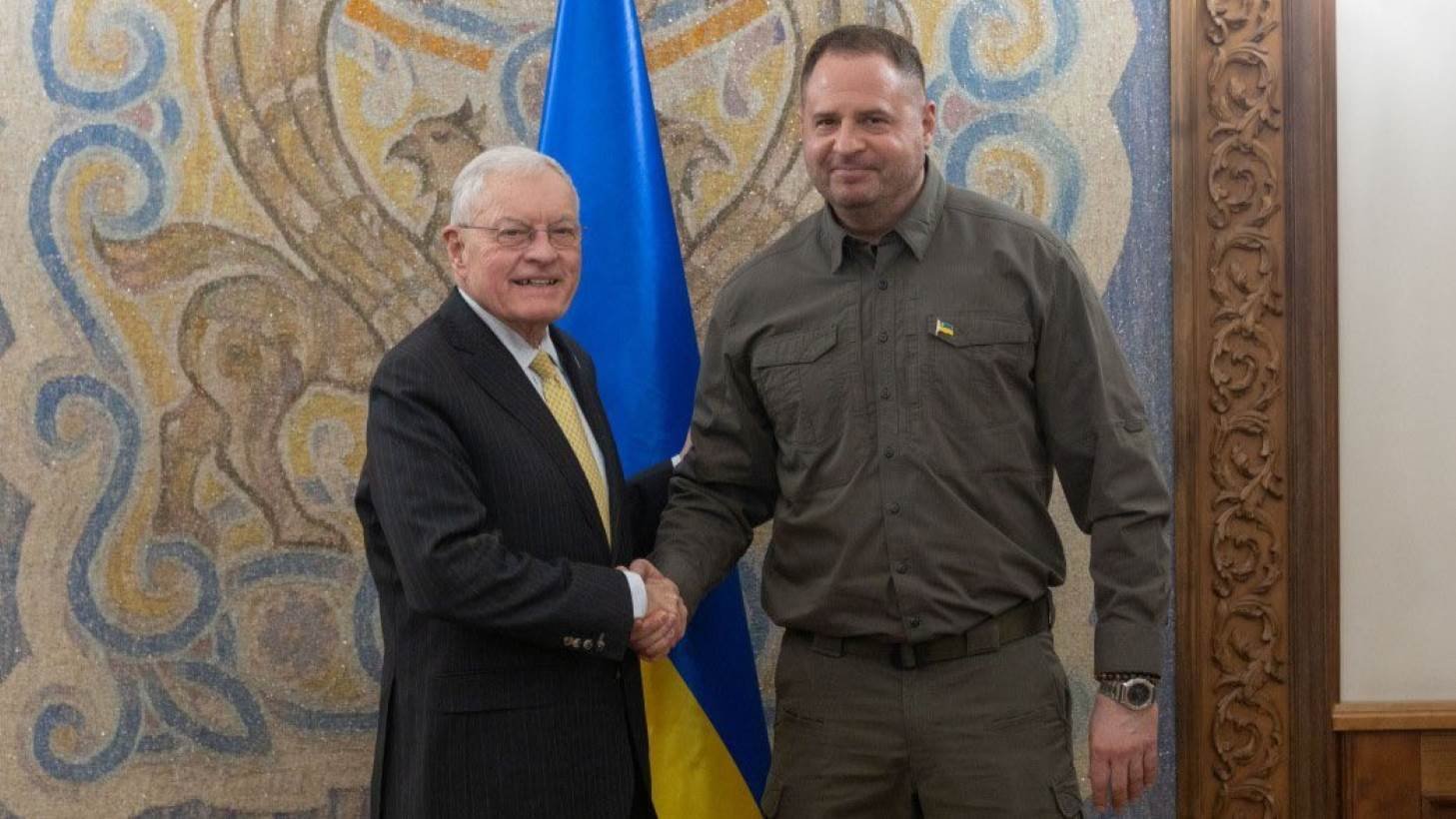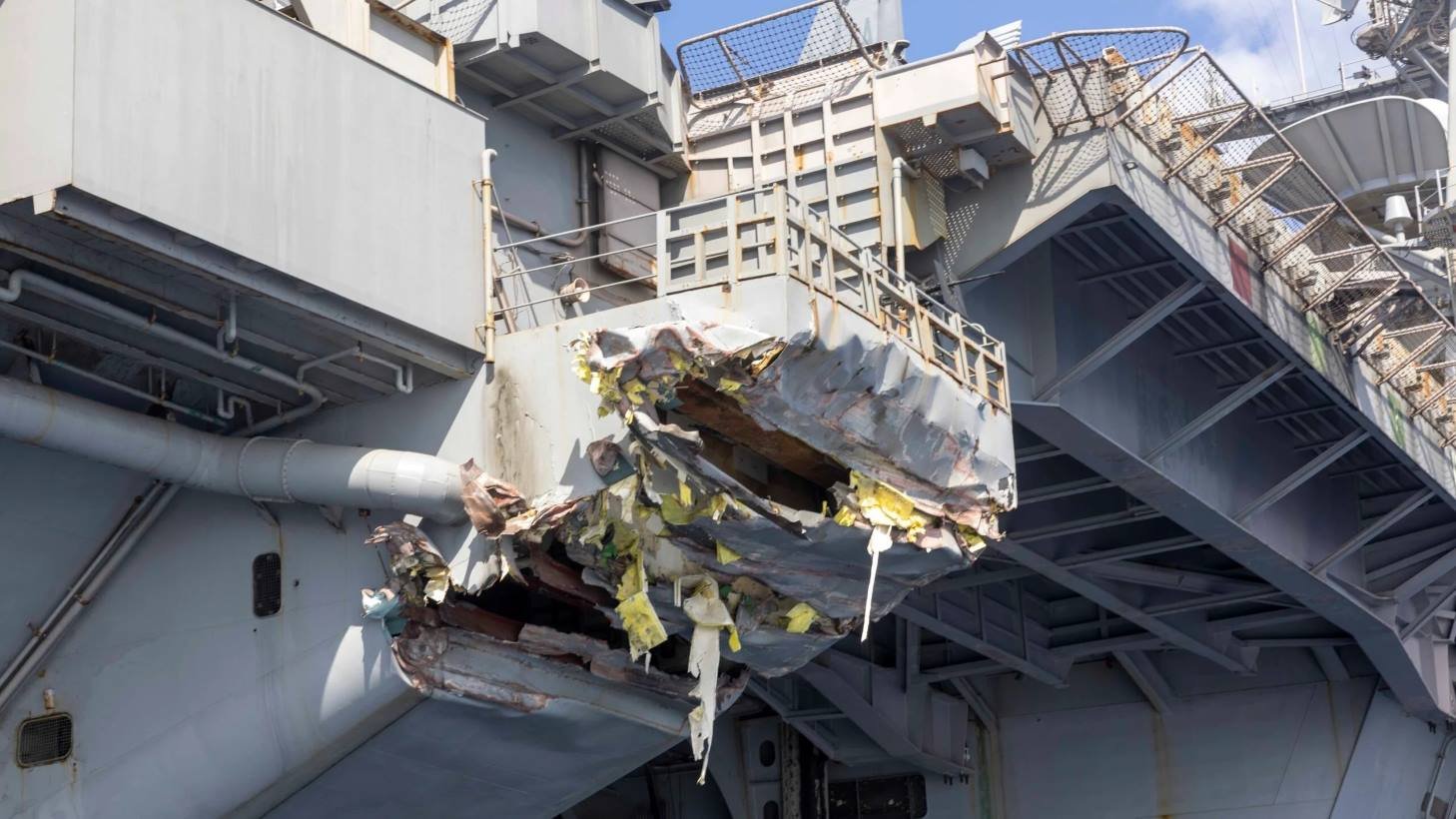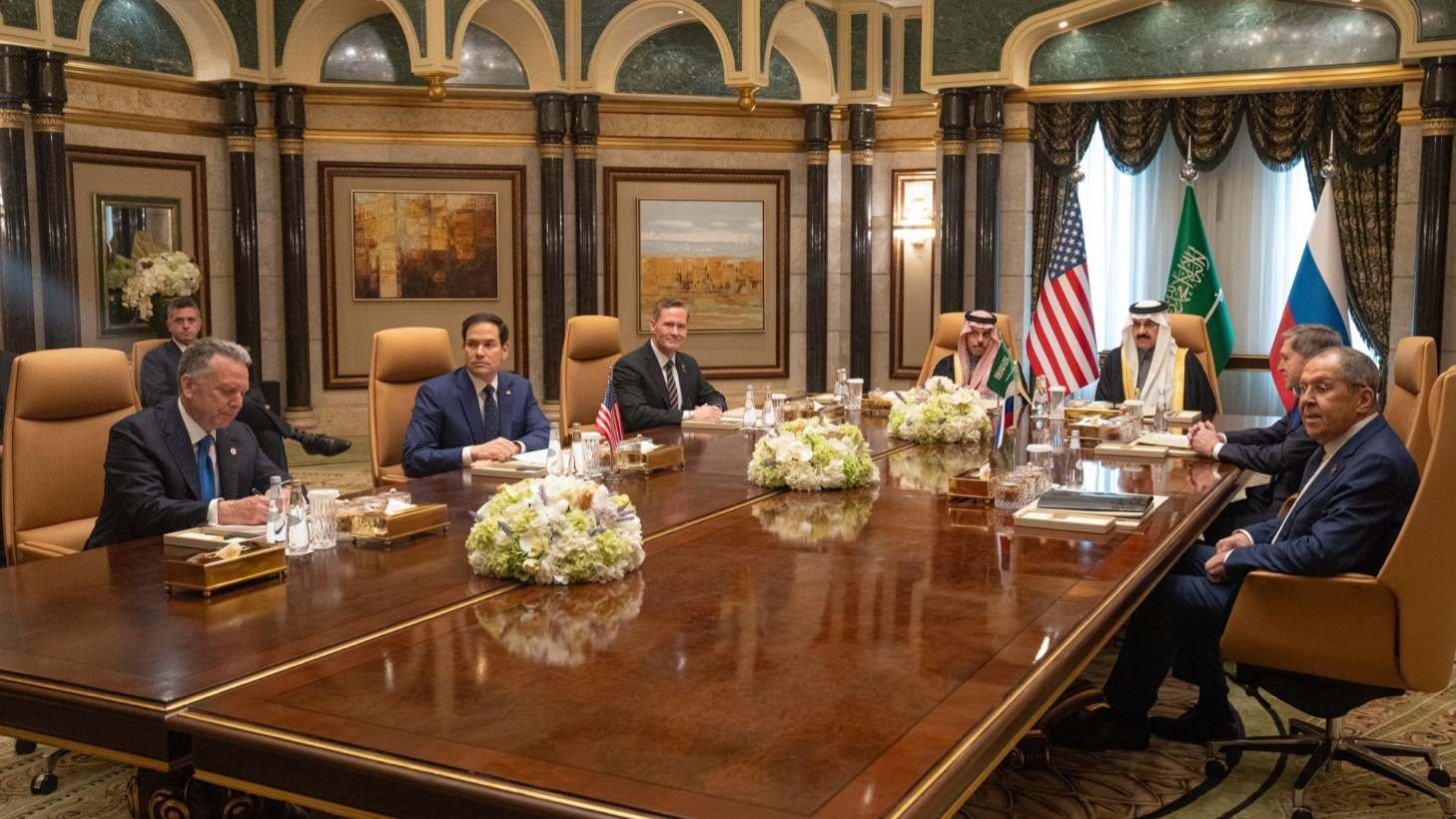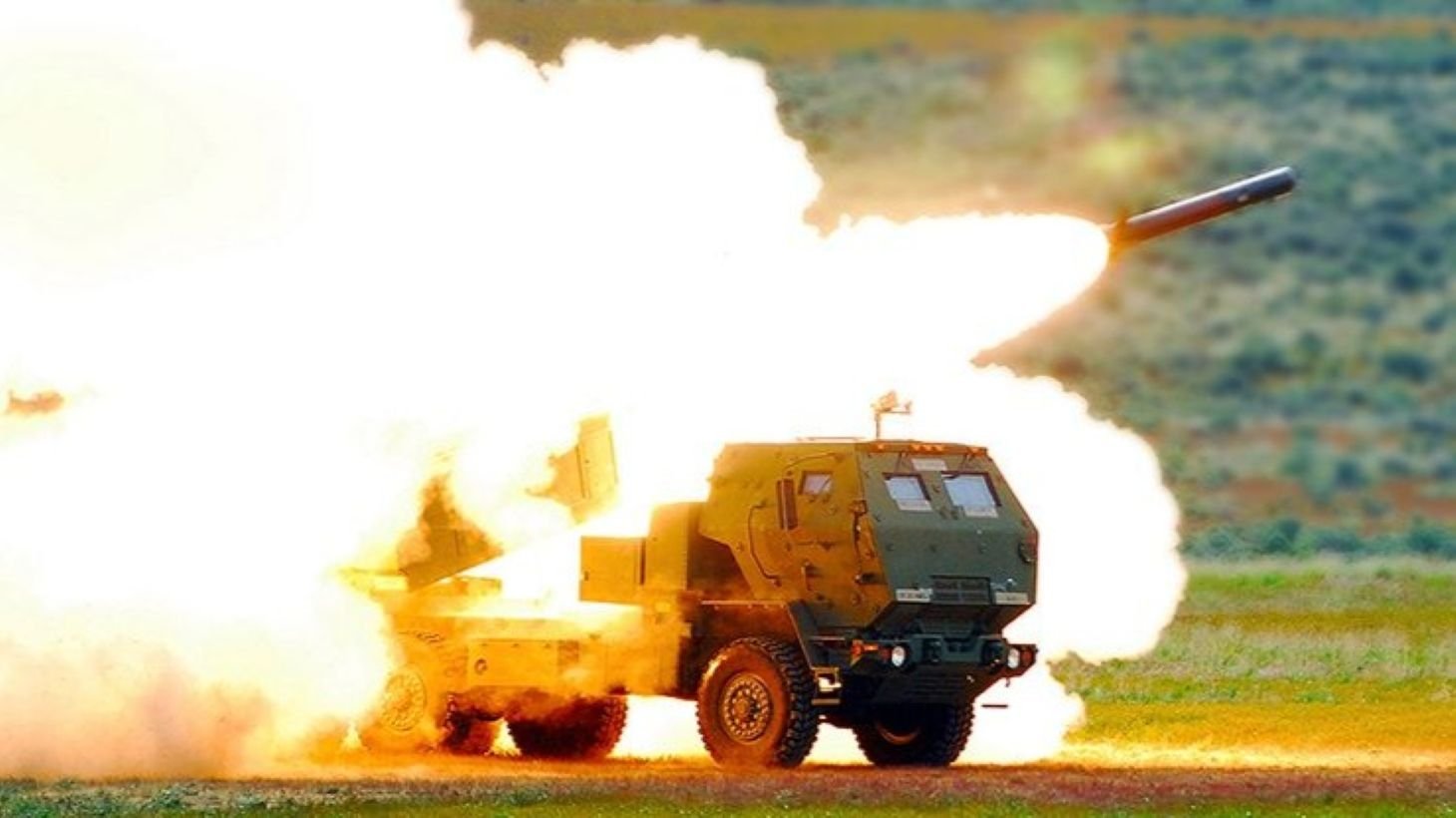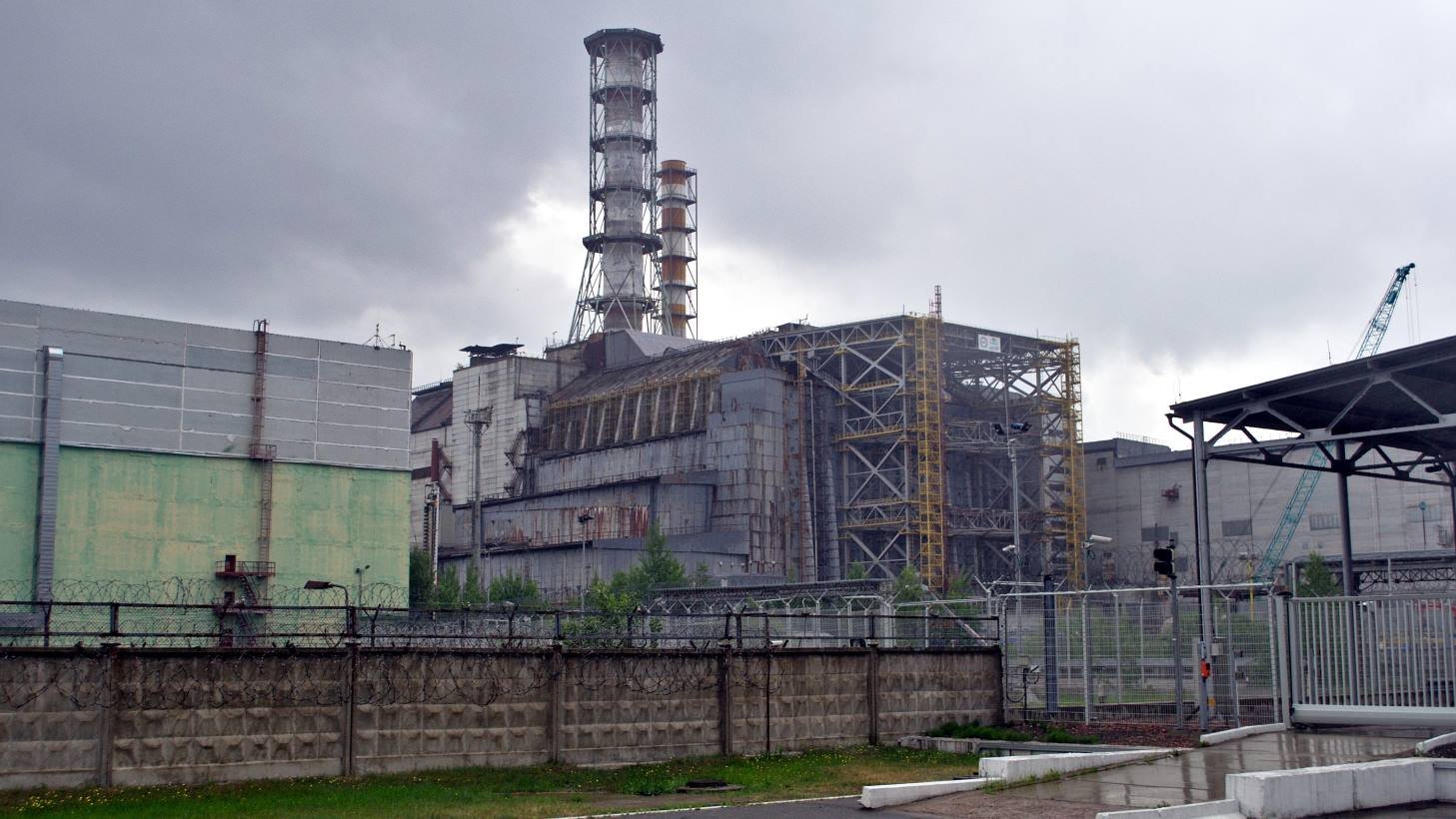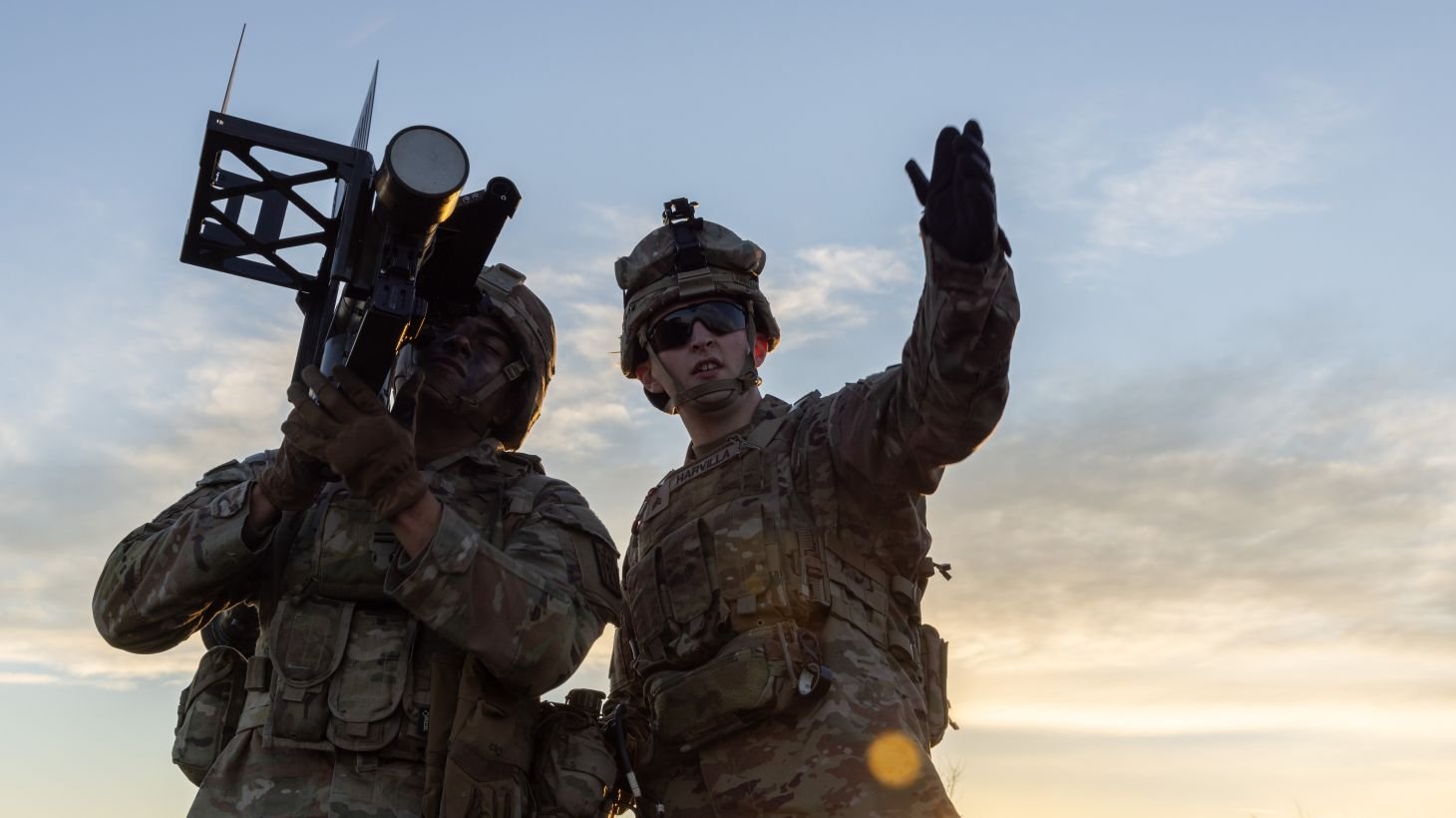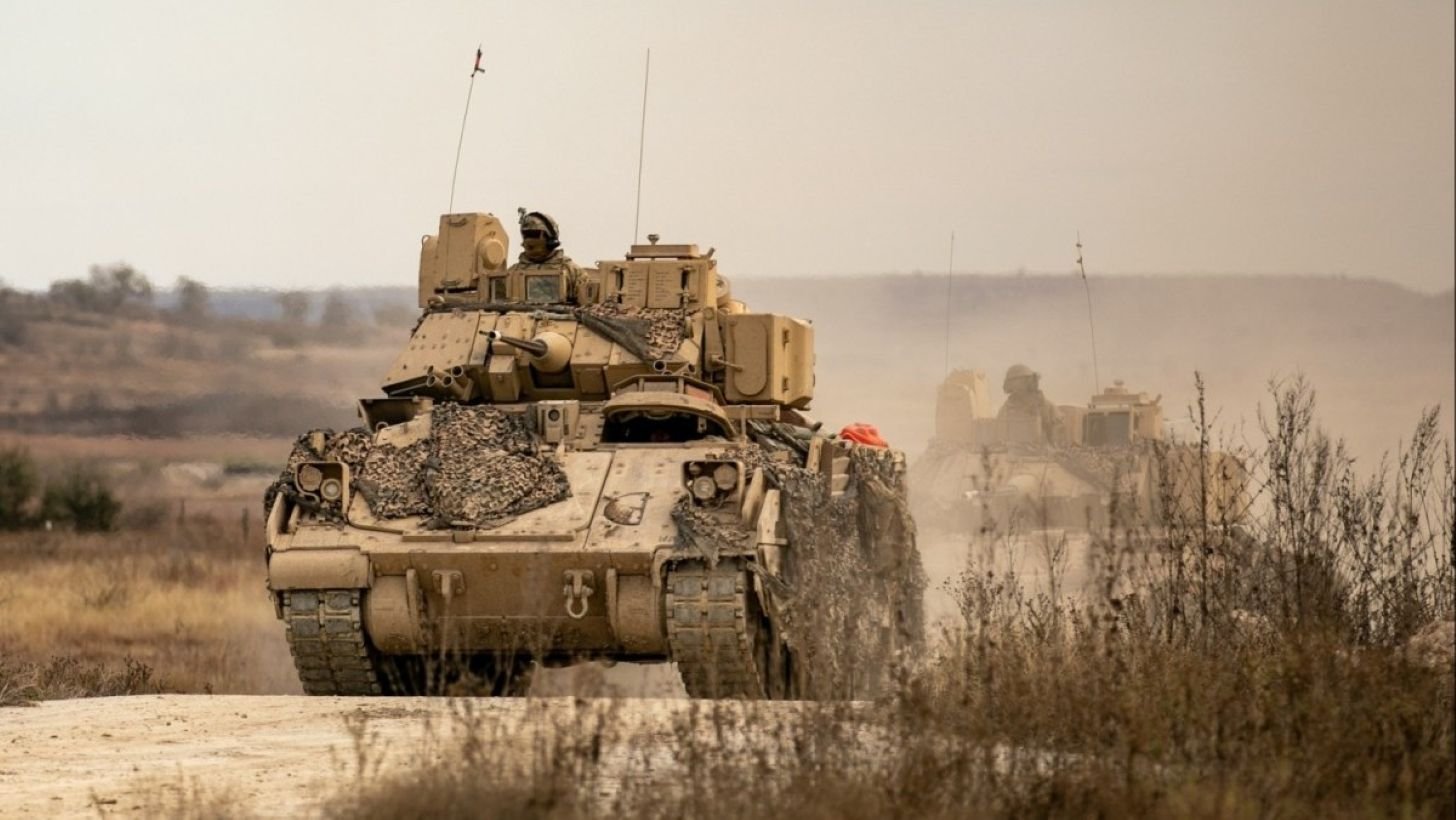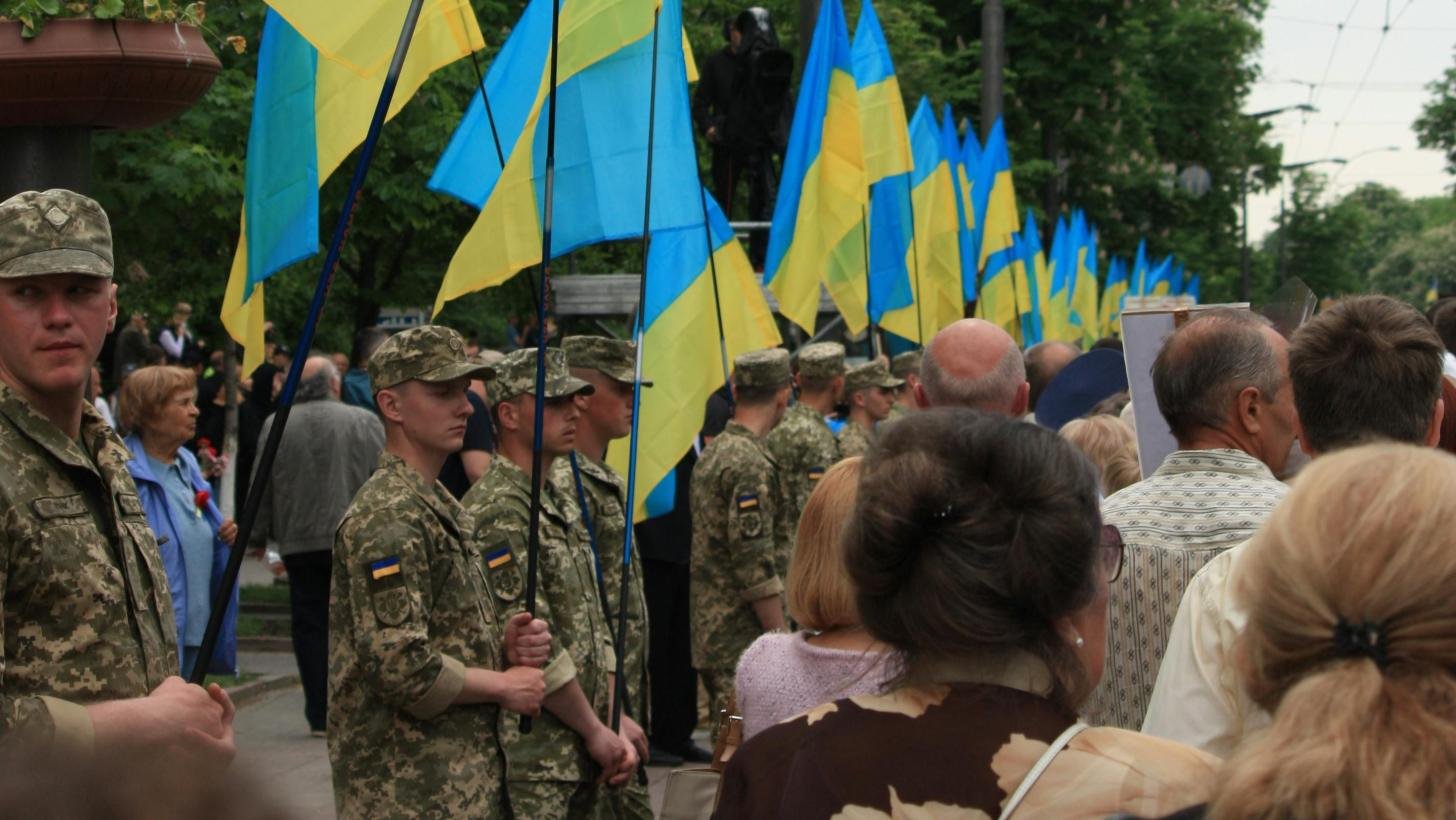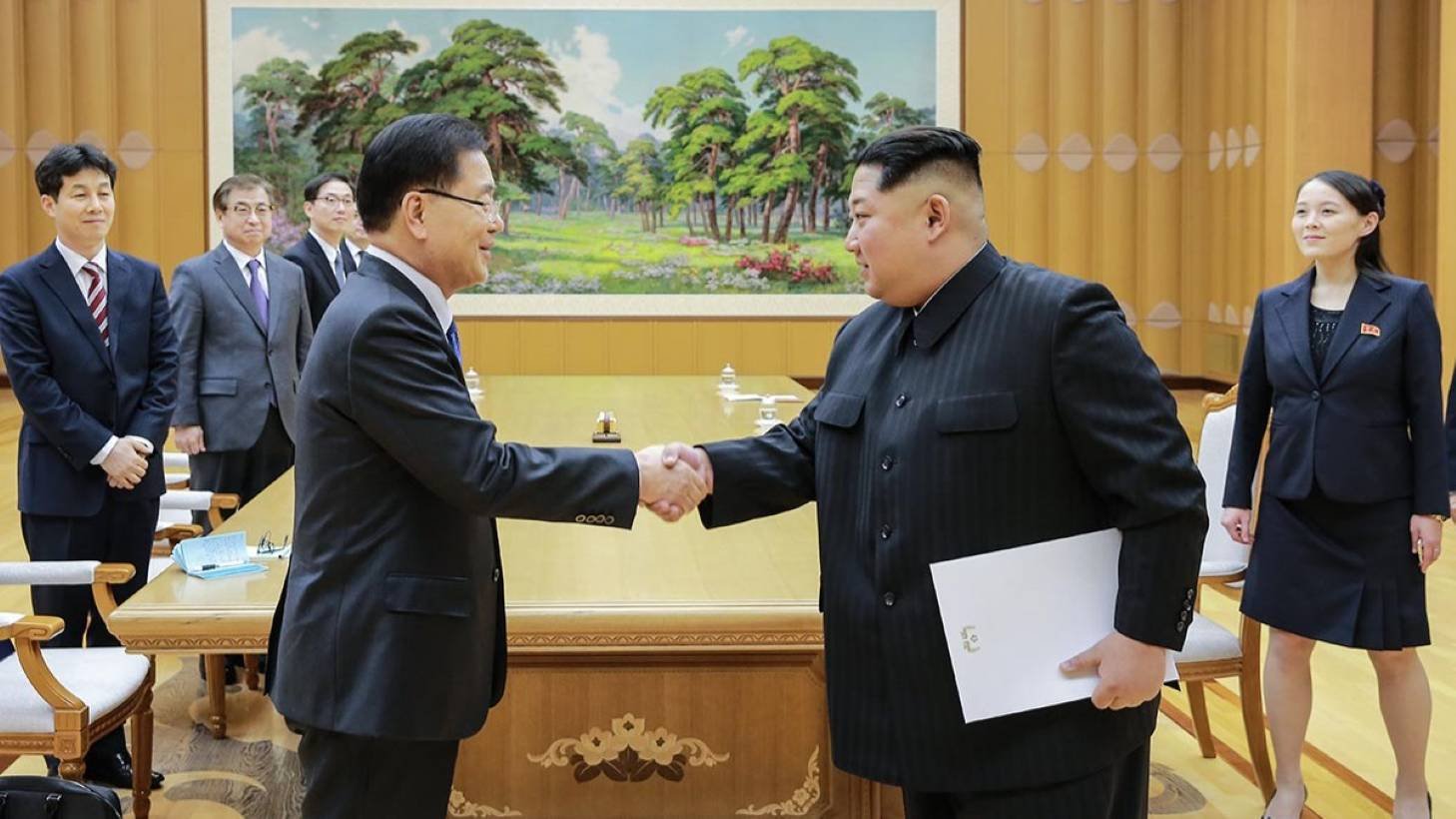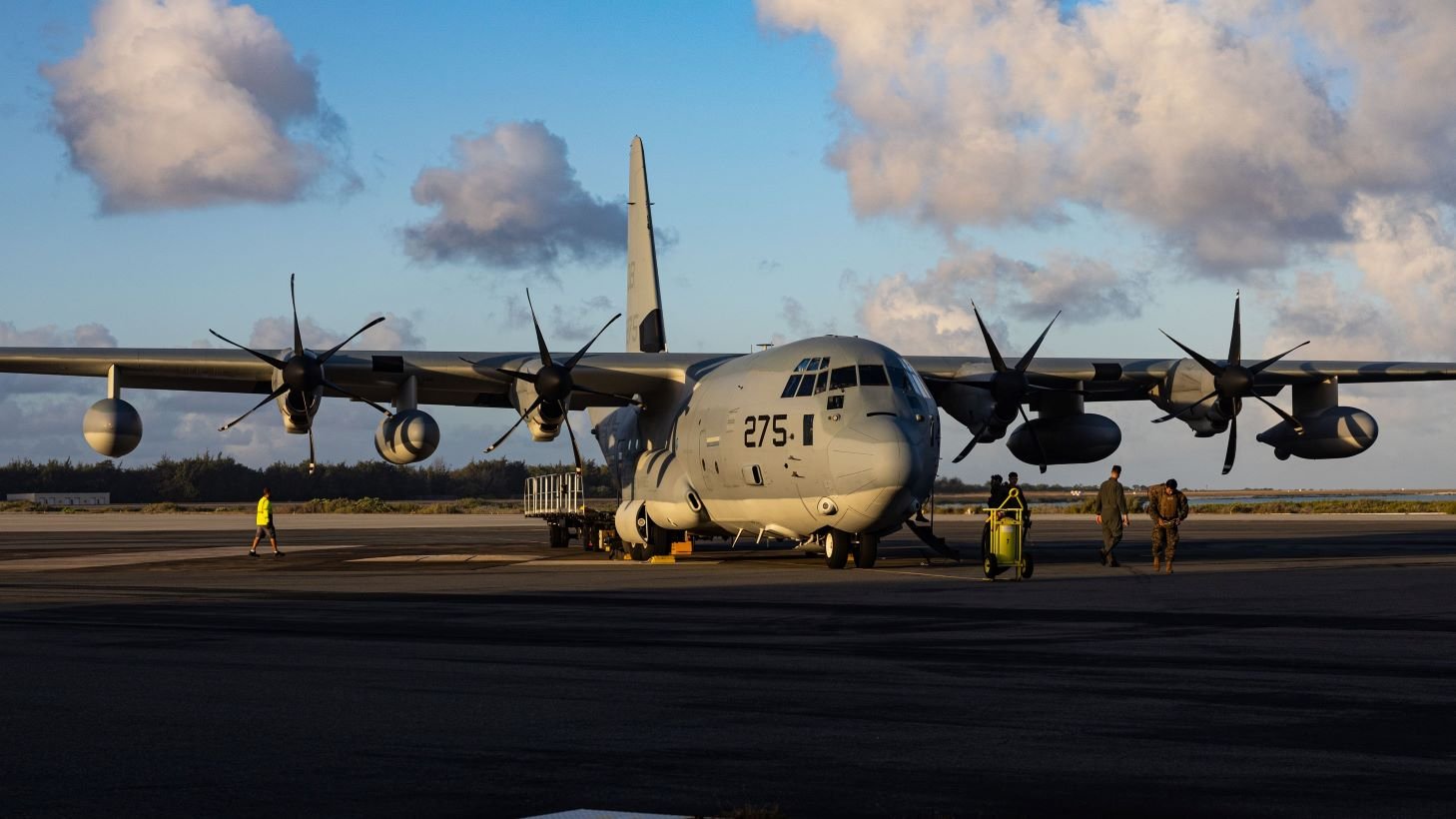-
Posts
790 -
Joined
-
Last visited
Content Type
Profiles
Uncrowned Armory News
Prepping Cookbook
Conspiracy Theories
Uncrowned Tactical Sports News
Prepping
Forums
Events
Everything posted by Uncrowned Guard
-
Nimitz-class Aircraft USS Harry S. Truman Command Change In a surprising turn of events, the U.S. Navy has announced the relieving of the commanding officer of the Nimitz-class aircraft carrier, the USS Harry S. Truman. Citing a "loss of confidence in his ability to command," This development in the Navy command structure affirms the strict standards adhered to for naval officers. Dismissal Stemming from Collision Incident The dismissal of Captain Dave Snowden, the commanding officer (CO) of the aircraft carrier, arrives a little more than a week following a collision with the merchant vessel Besiktas-M near Port Said, Egypt, on Feb. 12. The Feb. 16 statement from the U.S. 6th Fleet sheds light on the incident, disclosing damage to the Truman’s exterior wall of two storage rooms and a maintenance space. The damage also extended to a line handling space, the fantail, and the platform over one of the storage spaces. Despite the unfortunate incident, the Navy remains committed to its motto to hold on to high standards and accountability. Interim Appointment and Admiral Snowden's Future The commander of Carrier Strike Group 8, Rear Adm. Sean Bailey, has been named as the officer responsible for relieving Snowden. Snowden's forthcoming assignment will be with the Naval Air Forces Atlantic. Filling in the gap after Snowden, Capt. Christopher Hill, currently commanding officer of USS Dwight D. Eisenhower, will take on the role of interim commanding officer of the Truman. The USS Dwight D. Eisenhower is currently undergoing scheduled maintenance following its deployment in July 2024 to U.S. Central Command and U.S. European Command. This strategic change in command is stated to be without impact on the Truman’s ongoing deployment in the U.S. 6th Fleet area of operations. A Year of Challenges for the USS Harry S. Truman While the USS Harry S. Truman is accustomed to challenging situations, the past year has been particularly eventful. In a separate incident, Truman’s F/A-18 fighter was inadvertently shot down by the guided-missile cruiser USS Gettysburg in the Red Sea in December last year, with both crew members ejected and safely recovered. Despite these incidents, the USS Harry S. Truman continues its mission, portraying the resilience of the American Navy in the face of challenging situations. Rear Adm. Sean Bailey's Announcement Full Text In the full release, Rear Adm. Sean Bailey was confirmed to be relieving Snowden, who had been the aircraft carrier’s commanding officer since December 2023. The transfer follows the collision on Feb. 12 involving Truman and the merchant vessel Besiktas-M in the vicinity of Port Said, Egypt. Bailey reiterated the line in the sand that the U.S. Navy has drawn – commanding officers are held to the highest standard and actions are taken when those standards are not met. Capt. Christopher Hill will temporarily serve as the commanding officer of the Truman. He assures that the change in command will not impact the deployment or the mission of the Harry S. Truman in the U.S. 6th Fleet area of operations. View full article
-

Trump's Envoy Engages Zelensky Amid Tensions and Allegations
Uncrowned Guard posted an article in Ongoing Conflicts
Trump's Special Envoy Meets President Zelensky Amidst Controversy In an urgent diplomatic engagement on February 20th, President Volodymyr Zelensky of Ukraine sat down with Keith Kellogg, U.S. President Donald Trump's special envoy for Ukraine. The meeting focused on various critical issues, most notably the current battle conditions, the return of Ukrainian prisoners of war (POWs), and the potential for stronger security arrangements. President Zelensky conveyed his country's readiness for a mutually beneficial agreement regarding significant U.S. investments and security enhancements. "Our proposal outlines the quickest and most efficient route to achieve the desired outcomes," Zelensky expressed on the social media channel, Telegram. Washington had initially planned a press briefing post this meet, however, a direct request from the U.S. led to no joint statements being issued, according to Ukraine’s presidential spokesperson, Serhii Nykyforov. Kellogg's Diplomatic Mission in Focus One day prior to the meeting, on February 19th, Kellogg landed in Ukraine to forward Washington's conflict resolution efforts amidst the escalating full-scale war with Russia. On arrival, he expressed a keen intent to address Kyiv's concerns and to relay key insights to Washington. This visit follows close on the heels of the U.S.-Russia secret negotiations in Saudi Arabia on February 18th. These exclusive talks were conducted without Ukrainian representation, a development strongly decried by Zelensky who asserted his country's right to be involved in all conversations revolving around peacebuilding for the region. Tensions Simmer as Trump's Unfounded Claims Stir Outrage This diplomatic engagement comes amidst escalating tensions between Kyiv and Washington, fueled by President Trump's unfounded allegations against Ukraine. Erroneously labeling Zelensky a "dictator" and alleging a refusal to conduct elections on his part, Trump's baseless accusations have not only stirred controversy but also blatantly overlooked Ukraine's constitutional clause barring elections during martial law, enacted due to Russia's full-scale invasion in 2022. In addition to meeting with Zelensky, Kellogg also discussed key issues with top-ranked Ukrainian military and government officials during his visit to Ukraine. Although Kellogg's specific role in Trump's peace efforts is still ambiguous, there is palpable speculation in the diplomatic gallery about his absence from the talks in Saudi Arabia on February 18th. Suspicions attribute this absence to his perceived pro-Ukraine stance, triggering possible objections from Russia. Trump's recent pronouncements have stirred apprehension in Kyiv and amongst European allies, causing them to question Washington's wavering stance on the war.-
- ukraine war
- special envoy
- (and 6 more)
-
Trump's Special Envoy Meets President Zelensky Amidst Controversy In an urgent diplomatic engagement on February 20th, President Volodymyr Zelensky of Ukraine sat down with Keith Kellogg, U.S. President Donald Trump's special envoy for Ukraine. The meeting focused on various critical issues, most notably the current battle conditions, the return of Ukrainian prisoners of war (POWs), and the potential for stronger security arrangements. President Zelensky conveyed his country's readiness for a mutually beneficial agreement regarding significant U.S. investments and security enhancements. "Our proposal outlines the quickest and most efficient route to achieve the desired outcomes," Zelensky expressed on the social media channel, Telegram. Washington had initially planned a press briefing post this meet, however, a direct request from the U.S. led to no joint statements being issued, according to Ukraine’s presidential spokesperson, Serhii Nykyforov. Kellogg's Diplomatic Mission in Focus One day prior to the meeting, on February 19th, Kellogg landed in Ukraine to forward Washington's conflict resolution efforts amidst the escalating full-scale war with Russia. On arrival, he expressed a keen intent to address Kyiv's concerns and to relay key insights to Washington. This visit follows close on the heels of the U.S.-Russia secret negotiations in Saudi Arabia on February 18th. These exclusive talks were conducted without Ukrainian representation, a development strongly decried by Zelensky who asserted his country's right to be involved in all conversations revolving around peacebuilding for the region. Tensions Simmer as Trump's Unfounded Claims Stir Outrage This diplomatic engagement comes amidst escalating tensions between Kyiv and Washington, fueled by President Trump's unfounded allegations against Ukraine. Erroneously labeling Zelensky a "dictator" and alleging a refusal to conduct elections on his part, Trump's baseless accusations have not only stirred controversy but also blatantly overlooked Ukraine's constitutional clause barring elections during martial law, enacted due to Russia's full-scale invasion in 2022. In addition to meeting with Zelensky, Kellogg also discussed key issues with top-ranked Ukrainian military and government officials during his visit to Ukraine. Although Kellogg's specific role in Trump's peace efforts is still ambiguous, there is palpable speculation in the diplomatic gallery about his absence from the talks in Saudi Arabia on February 18th. Suspicions attribute this absence to his perceived pro-Ukraine stance, triggering possible objections from Russia. Trump's recent pronouncements have stirred apprehension in Kyiv and amongst European allies, causing them to question Washington's wavering stance on the war. View full article
-
- ukraine war
- special envoy
- (and 6 more)
-

USS Truman Collision: Damage Detailed, Operations Unhindered
Uncrowned Guard posted an article in Military News
Collision Incidents Cause Noticeable Damage to USS Harry S. Truman Recently released images of the U.S. Navy warship, the USS Harry S. Truman, reveal significant damage sustained after colliding with a mercantile vessel last week. The nuclear-powered aircraft carrier, with an impressive length of 1,100 feet, took a notable beating to its exterior starboard quarter during the mishap. Post-incident, the warship had to undergo repairs and was subsequently docked at the U.S naval station in Souda Bay, Greece. The shots, made public by the Navy on Saturday, give a glimpse into the damaged areas that included the outer wall of two storage units and an area dedicated to maintenance tasks. Impact of the Incident on Combat Capabilities & Repair Plans Despite visible damage, the essentials of the ship remain intact and unaffected. The Navy confirmed in a statement that the accident did not compromise the ship's combat ability. It has been engaged in flight functions since the collision incident on Wednesday. Preparing to mend the situation, a group that includes structural engineers and naval architects is devising a comprehensive repair plan. The Navy has refrained from announcing a potential timeline for implementing this plan, keeping information about the duration of repair work under wraps. Details of the Collision and Its Ramifications In the Mediterranean Sea, near Egypt's Port Said, the Truman made an unfortunate collision with the Besiktas-M; a 617-foot, Panamanian-flagged carrier. This collision occurred in the congested waters close to the entrance to the Suez Canal. While the collision caused damage to both vessels involved, it fortunately did not lead to injuries aboard either ship as confirmed by the Navy post-incident. This occurrence happened near a popular anchorage area for ships crossing the canal, highlighting the hazards of marine navigation in crowded waterways. Expert Views on Risk Factors & Operational Status of the Warship Carl Schuster, a former U.S Navy captain and a current instructor at Hawaii Pacific University, comments on the inherent risk of navigating in restricted waterways due to the limited space for maneuvering. He explains, "Both ships need about one nautical mile to stop. Quick endangerment is possible due to minor navigation errors, such misinterpretation of the other ship's movements, or delay in decision-making." Prior to the unexpected incident, the Truman was involved in a working port visit to Souda Bay following two months of combat missions in the Central Command location. During this period, multiple strikes were conducted against Houthi rebels in Yemen. Air strikes were also launched against ISIS in Somalia, according to the Navy. Despite the incident, Rear Adm. Sean Bailey, the commander of Truman's carrier strike group, assures that the Truman remains operational within the region. The group includes a guided missile cruiser and three destroyers. Bailey emphasizes the commitment to responding to any challenges in this dynamic and globally significant security environment. -
Collision Incidents Cause Noticeable Damage to USS Harry S. Truman Recently released images of the U.S. Navy warship, the USS Harry S. Truman, reveal significant damage sustained after colliding with a mercantile vessel last week. The nuclear-powered aircraft carrier, with an impressive length of 1,100 feet, took a notable beating to its exterior starboard quarter during the mishap. Post-incident, the warship had to undergo repairs and was subsequently docked at the U.S naval station in Souda Bay, Greece. The shots, made public by the Navy on Saturday, give a glimpse into the damaged areas that included the outer wall of two storage units and an area dedicated to maintenance tasks. Impact of the Incident on Combat Capabilities & Repair Plans Despite visible damage, the essentials of the ship remain intact and unaffected. The Navy confirmed in a statement that the accident did not compromise the ship's combat ability. It has been engaged in flight functions since the collision incident on Wednesday. Preparing to mend the situation, a group that includes structural engineers and naval architects is devising a comprehensive repair plan. The Navy has refrained from announcing a potential timeline for implementing this plan, keeping information about the duration of repair work under wraps. Details of the Collision and Its Ramifications In the Mediterranean Sea, near Egypt's Port Said, the Truman made an unfortunate collision with the Besiktas-M; a 617-foot, Panamanian-flagged carrier. This collision occurred in the congested waters close to the entrance to the Suez Canal. While the collision caused damage to both vessels involved, it fortunately did not lead to injuries aboard either ship as confirmed by the Navy post-incident. This occurrence happened near a popular anchorage area for ships crossing the canal, highlighting the hazards of marine navigation in crowded waterways. Expert Views on Risk Factors & Operational Status of the Warship Carl Schuster, a former U.S Navy captain and a current instructor at Hawaii Pacific University, comments on the inherent risk of navigating in restricted waterways due to the limited space for maneuvering. He explains, "Both ships need about one nautical mile to stop. Quick endangerment is possible due to minor navigation errors, such misinterpretation of the other ship's movements, or delay in decision-making." Prior to the unexpected incident, the Truman was involved in a working port visit to Souda Bay following two months of combat missions in the Central Command location. During this period, multiple strikes were conducted against Houthi rebels in Yemen. Air strikes were also launched against ISIS in Somalia, according to the Navy. Despite the incident, Rear Adm. Sean Bailey, the commander of Truman's carrier strike group, assures that the Truman remains operational within the region. The group includes a guided missile cruiser and three destroyers. Bailey emphasizes the commitment to responding to any challenges in this dynamic and globally significant security environment. View full article
-
US-Russia High-Level Talks Spotlight Ukraine Crisis On February 18, top officials from the US and Russia convened in Saudi Arabia to deliberate on the ongoing conflict in Ukraine. This marked the first substantive interaction between the two nations since Russia's full-fledged invasion of the conflicted region. Representing Washington was a delegation headed by State Secretary Marco Rubio, while his Russian counterpart Sergey Lavrov led his nation's delegation. High-level officials of both nations were present at this pivotal meeting held in Riyadh's Diriyah Palace. Post-meeting remarks from the Russian side painted a mixed picture of the talks, only deeming them as "not bad" and providing little clarity on possible points of agreement between the two nations. Intensive Diplomatic Engagements Amid Ukrain's Absence Following the US-Russia bilateral, another diplomatic dialogue involving Ukrainian President Volodymyr Zelensky is set to occur later this week in Saudi Arabia. Despite being the nation at the center of these discussions, neither Ukraine nor Europe was invited to the main round of talks, triggering unease in Kyiv and other European capitals. Zelensky stressed in an interview with the German network ARD that any peace agreement should involve Ukraine directly. He categorically rejected the notion of Ukraine accepting a peace deal that they played no part in negotiating. Amid the ongoing diplomatic efforts, Russia refuses to consider any territorial concessions to Ukraine. Notably, Russia controversially annexed Ukraine's Crimea peninsula in 2014 and took over Kherson, Zaporizhzhia, Donetsk, and Luhansk oblasts in 2022. Post-Talks Violence and Disinformation Accusations Following the US-Russia talks, the region of central Ukraine was troubled by a large-scale Russian drone attack. The attack damaged a residential block in the city of Dolynska, injuring a mother and her two children and sparking a rapid evacuation of inhabitants. In the ensuing counteroffensive, Ukraine claims to have shot down 103 of the 176 drones deployed by Russia, with 67 falling before reaching their targets due to electronic countermeasures. Amid these international discussions and military clashes, US President Donald Trump added more fuel to the fire by suggesting that Ukrainian President Zelenskyy should hold another election due to his supposedly low approval rating. Zelenskyy swiftly rebutted this claim and labeled it as Russian "disinformation," affirming his significant support among voters and his legitimate position as the Ukrainian President. As the war wages on, Ukraine finds itself negotiating the challenging terrain of military conflict, diplomatic discourse, and complex geopolitical interests.
-
US-Russia High-Level Talks Spotlight Ukraine Crisis On February 18, top officials from the US and Russia convened in Saudi Arabia to deliberate on the ongoing conflict in Ukraine. This marked the first substantive interaction between the two nations since Russia's full-fledged invasion of the conflicted region. Representing Washington was a delegation headed by State Secretary Marco Rubio, while his Russian counterpart Sergey Lavrov led his nation's delegation. High-level officials of both nations were present at this pivotal meeting held in Riyadh's Diriyah Palace. Post-meeting remarks from the Russian side painted a mixed picture of the talks, only deeming them as "not bad" and providing little clarity on possible points of agreement between the two nations. Intensive Diplomatic Engagements Amid Ukrain's Absence Following the US-Russia bilateral, another diplomatic dialogue involving Ukrainian President Volodymyr Zelensky is set to occur later this week in Saudi Arabia. Despite being the nation at the center of these discussions, neither Ukraine nor Europe was invited to the main round of talks, triggering unease in Kyiv and other European capitals. Zelensky stressed in an interview with the German network ARD that any peace agreement should involve Ukraine directly. He categorically rejected the notion of Ukraine accepting a peace deal that they played no part in negotiating. Amid the ongoing diplomatic efforts, Russia refuses to consider any territorial concessions to Ukraine. Notably, Russia controversially annexed Ukraine's Crimea peninsula in 2014 and took over Kherson, Zaporizhzhia, Donetsk, and Luhansk oblasts in 2022. Post-Talks Violence and Disinformation Accusations Following the US-Russia talks, the region of central Ukraine was troubled by a large-scale Russian drone attack. The attack damaged a residential block in the city of Dolynska, injuring a mother and her two children and sparking a rapid evacuation of inhabitants. In the ensuing counteroffensive, Ukraine claims to have shot down 103 of the 176 drones deployed by Russia, with 67 falling before reaching their targets due to electronic countermeasures. Amid these international discussions and military clashes, US President Donald Trump added more fuel to the fire by suggesting that Ukrainian President Zelenskyy should hold another election due to his supposedly low approval rating. Zelenskyy swiftly rebutted this claim and labeled it as Russian "disinformation," affirming his significant support among voters and his legitimate position as the Ukrainian President. As the war wages on, Ukraine finds itself negotiating the challenging terrain of military conflict, diplomatic discourse, and complex geopolitical interests. View full article
-
Estonia Questions US About HIMARS Production, Considers Alternative Options Uncertainty clouds the possibility of Estonia purchasing a second batch of M142 High Mobility Artillery Rocket Systems (HIMARS) from Lockheed Martin, with the US government's ability to expedite production and provide better delivery slots in question. Defense Minister Hanno Pevkur has indicated that Estonia's decision hangs in the balance and an alternative course could be charted in the coming months. "Current data shows that the waiting period for the product delivery is quite prolonged, and unfortunately, we do not have the luxury of excessive time," Pevkur noted during a recent sideline interview at the Munich Security Conference. One of their key advantages is the ability to strike fixed targets. HIMARS has been a formidable asset for Ukraine, effectively disrupting Russian supply lines, ammunition depots, and command-control centers. Over 40 HIMARS units have already been supplied by the US to Ukraine, as stated on a US State Department factsheet. Alternative Avenues for Defense Assets and Equipment The US government's response determines if Estonia will pursue a second HIMARS consignment or divert to an alternate route, said Pevkur, suggesting the choice of a preferred platform could be announced in a few months. Rocket production firms such as Rocketsan's Khan from Turkey and the Israeli-built Elbit Precise and Universal Launching System (PULS) seem likely contenders for Estonia's consideration. Pevkur specifically highlighted South Korea's K239 Chunmoo, developed by Hanwha Aerospace, as a strong competitor. Boasting clientele in Poland and under consideration by Norway, Hanwha Aerospace is no stranger to Estonia. The South Korean firm also supplies Estonia with 36 K9 Thunder self-propelled howitzers, bolstering its chances. HIMARS Significance for Estonia Amidst Ukraine Support Estonia has prioritized investment in long-range weaponry, partly owing to its significant contribution of equipment towards Ukraine's defense efforts. These donations have required Estonia to refill the void in its hardware. Tallinn has made substantial headway in acquiring six HIMARS units, a $200 million deal that features rockets capable of traveling between 70km and 300km, as well as communication systems, training, and logistics. The official keys to these systems have been handed over to Estonia in a ceremony at Lockheed Martin's headquarters last month, and they are expected to be delivered soon. While Pevkur indicated there still is some time to decide about future procurements like the XA-180 armored personnel carrier replacement. Currently, both Lockheed Martin and the US State Department have remained tight-lipped about queries related to HIMARS production.
-
Estonia Questions US About HIMARS Production, Considers Alternative Options Uncertainty clouds the possibility of Estonia purchasing a second batch of M142 High Mobility Artillery Rocket Systems (HIMARS) from Lockheed Martin, with the US government's ability to expedite production and provide better delivery slots in question. Defense Minister Hanno Pevkur has indicated that Estonia's decision hangs in the balance and an alternative course could be charted in the coming months. "Current data shows that the waiting period for the product delivery is quite prolonged, and unfortunately, we do not have the luxury of excessive time," Pevkur noted during a recent sideline interview at the Munich Security Conference. One of their key advantages is the ability to strike fixed targets. HIMARS has been a formidable asset for Ukraine, effectively disrupting Russian supply lines, ammunition depots, and command-control centers. Over 40 HIMARS units have already been supplied by the US to Ukraine, as stated on a US State Department factsheet. Alternative Avenues for Defense Assets and Equipment The US government's response determines if Estonia will pursue a second HIMARS consignment or divert to an alternate route, said Pevkur, suggesting the choice of a preferred platform could be announced in a few months. Rocket production firms such as Rocketsan's Khan from Turkey and the Israeli-built Elbit Precise and Universal Launching System (PULS) seem likely contenders for Estonia's consideration. Pevkur specifically highlighted South Korea's K239 Chunmoo, developed by Hanwha Aerospace, as a strong competitor. Boasting clientele in Poland and under consideration by Norway, Hanwha Aerospace is no stranger to Estonia. The South Korean firm also supplies Estonia with 36 K9 Thunder self-propelled howitzers, bolstering its chances. HIMARS Significance for Estonia Amidst Ukraine Support Estonia has prioritized investment in long-range weaponry, partly owing to its significant contribution of equipment towards Ukraine's defense efforts. These donations have required Estonia to refill the void in its hardware. Tallinn has made substantial headway in acquiring six HIMARS units, a $200 million deal that features rockets capable of traveling between 70km and 300km, as well as communication systems, training, and logistics. The official keys to these systems have been handed over to Estonia in a ceremony at Lockheed Martin's headquarters last month, and they are expected to be delivered soon. While Pevkur indicated there still is some time to decide about future procurements like the XA-180 armored personnel carrier replacement. Currently, both Lockheed Martin and the US State Department have remained tight-lipped about queries related to HIMARS production. View full article
-
Smith & Wesson Unveils Latest CSX E-Series Micro-Compact Pistols In a recent move showcasing their commitment to innovation and craftsmanship, Smith & Wesson has presented the latest addition to their concealed carry platform - the CSX E-Series. Building upon the success of the CSX line, which debuted only three years prior with the introduction of the aluminum alloy frame CSX micro-compact pistols, the premier gunsmiths have been diligently honing the line's design and features, and the results are anything but ordinary. Now, we turn our attention to what makes the CSX E-Series stand out. On Improved Specifications and New Design Upgrades The CSX E-Series, while holding on to its predecessor’s aluminum alloy frame, is packed with design enhancements that are far from trivial. Ranging in barrel lengths of 3.1” or 3.6”, these new-generation 9mm micro-compact weapons come bundled with three magazine capacity options of 12, 15, and 17 rounds, as well as 10-round compliant versions, thus catering to varied user requirements. Enhanced Optics and Ingenious Adaptability Shaping up as optics-ready firearms, the CSX E-Series pistols are fitted with an RMS-C footprint, fully compatible with the Holosun 507K, ensuring an unrivaled shooting experience. The ClearSight cut, a Smith & Wesson exclusive feature, effectively diverts gases from the optic lens, securing an unmasked view for the shooter. Additionally, the CSX E-Series emphasizes versatility, featuring a newly conceived modular grip adapter. This empowers users to adjust frame dimensions to their preference, be it for deep concealment or more robust handling and greater capacity. Other enhancements include an enlarged front strap for an improved grip, a redesigned trigger for better shooting accuracy, interchangeable backstraps, ambidextrous controls, standard white-dot sights, and a timeless flat-black finished frame. Pricing and Availability of CSX E-Series Variants With all four variants of the Smith & Wesson CSX E-Series now available in markets, they carry a listed MSRP of $699.00. Given their advanced design, adaptability, and feature-packed characteristics, these pistols unquestionably better the concealed carry platform. Smith & Wesson is asserting with the launch of the new CSX E-Series model that it embodies an enhanced evolution of a classic platform, evolving to meet the high demands of those requiring more from their concealed carry, making it more than just a firearm – it's a reliable companion.
-
- micro-compact pistol
- brand: smith & wesson
- (and 3 more)
-
Smith & Wesson Unveils Latest CSX E-Series Micro-Compact Pistols In a recent move showcasing their commitment to innovation and craftsmanship, Smith & Wesson has presented the latest addition to their concealed carry platform - the CSX E-Series. Building upon the success of the CSX line, which debuted only three years prior with the introduction of the aluminum alloy frame CSX micro-compact pistols, the premier gunsmiths have been diligently honing the line's design and features, and the results are anything but ordinary. Now, we turn our attention to what makes the CSX E-Series stand out. On Improved Specifications and New Design Upgrades The CSX E-Series, while holding on to its predecessor’s aluminum alloy frame, is packed with design enhancements that are far from trivial. Ranging in barrel lengths of 3.1” or 3.6”, these new-generation 9mm micro-compact weapons come bundled with three magazine capacity options of 12, 15, and 17 rounds, as well as 10-round compliant versions, thus catering to varied user requirements. Enhanced Optics and Ingenious Adaptability Shaping up as optics-ready firearms, the CSX E-Series pistols are fitted with an RMS-C footprint, fully compatible with the Holosun 507K, ensuring an unrivaled shooting experience. The ClearSight cut, a Smith & Wesson exclusive feature, effectively diverts gases from the optic lens, securing an unmasked view for the shooter. Additionally, the CSX E-Series emphasizes versatility, featuring a newly conceived modular grip adapter. This empowers users to adjust frame dimensions to their preference, be it for deep concealment or more robust handling and greater capacity. Other enhancements include an enlarged front strap for an improved grip, a redesigned trigger for better shooting accuracy, interchangeable backstraps, ambidextrous controls, standard white-dot sights, and a timeless flat-black finished frame. Pricing and Availability of CSX E-Series Variants With all four variants of the Smith & Wesson CSX E-Series now available in markets, they carry a listed MSRP of $699.00. Given their advanced design, adaptability, and feature-packed characteristics, these pistols unquestionably better the concealed carry platform. Smith & Wesson is asserting with the launch of the new CSX E-Series model that it embodies an enhanced evolution of a classic platform, evolving to meet the high demands of those requiring more from their concealed carry, making it more than just a firearm – it's a reliable companion. View full article
-
- micro-compact pistol
- brand: smith & wesson
- (and 3 more)
-
Discovery of Shahed Drone Wreckage At Chernobyl Confirmed The remains of a Shahed kamikaze drone have been uncovered by Ukrainian emergency services at the Chernobyl Nuclear Power Plant, where a Russian Strike targeted the shelter of Reactor 4. The incident took place overnight on the 14th of February, and despite the aggression, officials assert that no notable increase in radiation levels has been documented. The drone remnants, confirmed to be those of a Shahed-136— under the alias Geran-2, used commonly by Russian militaries— have been captured on camera by Ukraine's State Emergency Service. The footage showcases the drone's engine and clear evidence of damage resulting from the impact. Russia's Recurrent Strikes on Ukraine's Vital Infrastructure Russia's military activity has consistently targeted Ukraine's crucial infrastructure throughout the ongoing war, with this recent attack further emphasizing this destructive pattern. The Chernobyl Exclusion Zone, used previously by Moscow for strategizing and planning, has become a hotspot for said military activity. On February 24, 2022, Russian armies launched a full-scale invasion, occupying the nuclear facility in the initial days of the onslaught. This instance is not the first of its kind where Russian forces have utilized drones in the Chernobyl Zone. Recorded accounts of drone activity in the area spanning the last three years have raised alarms regarding the probable hazards of military exercises near places that house sensitive nuclear equipment. Zaporizhzhia, Europe's most extensive nuclear power plant, remains the only one to have been attacked and seized exclusively by Russia- a fact that escalates the prevalent concerns about nuclear safety. The unearthing of Shahed drone remains in Chernobyl only amplifies the worry about the region's long-term security and the susceptibility of wartime nuclear sites. Russia Continuously Denies Chernobyl Strike Despite Evidence Notwithstanding the discovery of Shahed drone debris, Russian officials continue to deny responsibility for the strike on Chernobyl Nuclear Power Plant's reinforced confinement architecture. The Kremlin has rejected all allegations of targeting Ukraine's nuclear infrastructure, even with the existence of video footage capturing the moment of the strike. Kremlin spokesperson Dmitry Peskov has labeled such accusations "provocations and distortions," dismissing the tangible proof discovered at the site. The model of the retrieved drone is Shahed, a model produced jointly by Russia and Iran under the alias Geran-2. A parallel denial was exhibited in Moldova following an identical episode where Moscow's special envoy, Oleg Ozorov, was presented with fragments of Russian drones as evidence of Russia's involvement in recent strikes on Moldovan territory. Authorities in Moldova seized these drones after crashes near the towns of Chumai and Ceadîr-Lunga on February 13. Despite being provided with material proof, the Russian envoy declined to acknowledge the drones' Russian origin and demanded additional evidence of Russia's role in the incident. This evasion strategy is characteristic of Russia, which consistently overlooks international standards while rejecting accountability. Its recurring dismissals of allegations as misinformation and propaganda paint a telling picture. The Chernobyl incident further demonstrates Moscow's strategy of avoidance, even in light of firm evidence linking it to drone strikes in Ukraine and beyond.
-
- drone strike
- drone warfare
- (and 4 more)
-
Discovery of Shahed Drone Wreckage At Chernobyl Confirmed The remains of a Shahed kamikaze drone have been uncovered by Ukrainian emergency services at the Chernobyl Nuclear Power Plant, where a Russian Strike targeted the shelter of Reactor 4. The incident took place overnight on the 14th of February, and despite the aggression, officials assert that no notable increase in radiation levels has been documented. The drone remnants, confirmed to be those of a Shahed-136— under the alias Geran-2, used commonly by Russian militaries— have been captured on camera by Ukraine's State Emergency Service. The footage showcases the drone's engine and clear evidence of damage resulting from the impact. Russia's Recurrent Strikes on Ukraine's Vital Infrastructure Russia's military activity has consistently targeted Ukraine's crucial infrastructure throughout the ongoing war, with this recent attack further emphasizing this destructive pattern. The Chernobyl Exclusion Zone, used previously by Moscow for strategizing and planning, has become a hotspot for said military activity. On February 24, 2022, Russian armies launched a full-scale invasion, occupying the nuclear facility in the initial days of the onslaught. This instance is not the first of its kind where Russian forces have utilized drones in the Chernobyl Zone. Recorded accounts of drone activity in the area spanning the last three years have raised alarms regarding the probable hazards of military exercises near places that house sensitive nuclear equipment. Zaporizhzhia, Europe's most extensive nuclear power plant, remains the only one to have been attacked and seized exclusively by Russia- a fact that escalates the prevalent concerns about nuclear safety. The unearthing of Shahed drone remains in Chernobyl only amplifies the worry about the region's long-term security and the susceptibility of wartime nuclear sites. Russia Continuously Denies Chernobyl Strike Despite Evidence Notwithstanding the discovery of Shahed drone debris, Russian officials continue to deny responsibility for the strike on Chernobyl Nuclear Power Plant's reinforced confinement architecture. The Kremlin has rejected all allegations of targeting Ukraine's nuclear infrastructure, even with the existence of video footage capturing the moment of the strike. Kremlin spokesperson Dmitry Peskov has labeled such accusations "provocations and distortions," dismissing the tangible proof discovered at the site. The model of the retrieved drone is Shahed, a model produced jointly by Russia and Iran under the alias Geran-2. A parallel denial was exhibited in Moldova following an identical episode where Moscow's special envoy, Oleg Ozorov, was presented with fragments of Russian drones as evidence of Russia's involvement in recent strikes on Moldovan territory. Authorities in Moldova seized these drones after crashes near the towns of Chumai and Ceadîr-Lunga on February 13. Despite being provided with material proof, the Russian envoy declined to acknowledge the drones' Russian origin and demanded additional evidence of Russia's role in the incident. This evasion strategy is characteristic of Russia, which consistently overlooks international standards while rejecting accountability. Its recurring dismissals of allegations as misinformation and propaganda paint a telling picture. The Chernobyl incident further demonstrates Moscow's strategy of avoidance, even in light of firm evidence linking it to drone strikes in Ukraine and beyond. View full article
-
- drone strike
- drone warfare
- (and 4 more)
-

Trump or Tactics? Unpacking the Army's Recruitment Boom
Uncrowned Guard posted an article in Military News
Army Sees Surge in Recruitment: Influence of Trump's Leadership or Reinvented Recruitment Strategy? Despite President Trump's recent claim to have triggered an uptick in army recruiting, evidence suggests that the rise in enlistments began predated his recent time in office. Even though POTUS's re-election and return to office have indeed corresponded with an elevated number of new soldier enlistments, the shift began nearly a year earlier, following the Army's comprehensive reinvention of its almost $2 billion recruitment efforts. Insight into the Recruitment Surge An official White House statement lauds the Army's best recruitment outcomes in the past 15 years. Similarly, Secretary of Defense Pete Hegseth points out that December and January have emerged as the most successful months for recruiting in 12 and 15 years, respectively. Neither party, however, detailed specific enlistment figures from these periods. Meanwhile, evidence has surfaced indicating the Army's recruitment drive began to recover last year, well ahead of Trump's election, as it launched significant alterations to its recruitment strategy. This rebound resonated in the 2024 fiscal year, highlighted by active-duty soldier recruitment, reaching 55,000 — a significant achievement following two previous years of missed targets. The current trend, influenced by either POTUS's tenure, the novel recruitment tactics, or a combination of both, continues into 2025. By October, the Army had already reached 59% of its 2025 Fiscal Year recruitment goal, according to a service spokeswoman. Revamping Recruitment: The Future Soldier Preparatory Course Two former Army officials cite the recent recruitment success as the fruit of years of diligent work, building off the backbone of the newly introduced Future Soldier Preparatory Course. This multi-week program has been instrumental in preparing potential soldiers for basic training. Introduced in 2022 and expanded significantly over the following years, the Future Soldier Preparatory Course is heralded for reversing the Army's previous recruitment shortfalls by assisting potential soldiers in meeting the service's physical and academic requirements. Throughout the 2024 fiscal year, approximately 24% of all new soldiers enlisted in the Army were graduates of this course. Furthermore, research suggests the increased difficulty for Americans to meet enlistment requirements over the past decade has also contributed to the course's effectiveness and overall success. It's worth noting that an increase in military enlistment over the past year reflects additional external factors. More women and racial minorities have joined the military, suggesting a broader shift beyond the recent election outcome. Economic benefits and education opportunities also play critical roles in individual decisions to enlist. Therefore, while the resumption of President Trump’s leadership might appeal to some potential recruits, the Army's invigorated recruitment tactics have provided a steady foundation for the rise in enlistments seen over the past year.-
- army recruitment
- trump's leadership
- (and 3 more)
-
Army Sees Surge in Recruitment: Influence of Trump's Leadership or Reinvented Recruitment Strategy? Despite President Trump's recent claim to have triggered an uptick in army recruiting, evidence suggests that the rise in enlistments began predated his recent time in office. Even though POTUS's re-election and return to office have indeed corresponded with an elevated number of new soldier enlistments, the shift began nearly a year earlier, following the Army's comprehensive reinvention of its almost $2 billion recruitment efforts. Insight into the Recruitment Surge An official White House statement lauds the Army's best recruitment outcomes in the past 15 years. Similarly, Secretary of Defense Pete Hegseth points out that December and January have emerged as the most successful months for recruiting in 12 and 15 years, respectively. Neither party, however, detailed specific enlistment figures from these periods. Meanwhile, evidence has surfaced indicating the Army's recruitment drive began to recover last year, well ahead of Trump's election, as it launched significant alterations to its recruitment strategy. This rebound resonated in the 2024 fiscal year, highlighted by active-duty soldier recruitment, reaching 55,000 — a significant achievement following two previous years of missed targets. The current trend, influenced by either POTUS's tenure, the novel recruitment tactics, or a combination of both, continues into 2025. By October, the Army had already reached 59% of its 2025 Fiscal Year recruitment goal, according to a service spokeswoman. Revamping Recruitment: The Future Soldier Preparatory Course Two former Army officials cite the recent recruitment success as the fruit of years of diligent work, building off the backbone of the newly introduced Future Soldier Preparatory Course. This multi-week program has been instrumental in preparing potential soldiers for basic training. Introduced in 2022 and expanded significantly over the following years, the Future Soldier Preparatory Course is heralded for reversing the Army's previous recruitment shortfalls by assisting potential soldiers in meeting the service's physical and academic requirements. Throughout the 2024 fiscal year, approximately 24% of all new soldiers enlisted in the Army were graduates of this course. Furthermore, research suggests the increased difficulty for Americans to meet enlistment requirements over the past decade has also contributed to the course's effectiveness and overall success. It's worth noting that an increase in military enlistment over the past year reflects additional external factors. More women and racial minorities have joined the military, suggesting a broader shift beyond the recent election outcome. Economic benefits and education opportunities also play critical roles in individual decisions to enlist. Therefore, while the resumption of President Trump’s leadership might appeal to some potential recruits, the Army's invigorated recruitment tactics have provided a steady foundation for the rise in enlistments seen over the past year. View full article
-
- army recruitment
- trump's leadership
- (and 3 more)
-
Admiral Nakhimov Battlecruiser Reactivates Its Nuclear Reactors The Russian Navy's nuclear-powered battlecruiser, Admiral Nakhimov, which was out of service for an extended period, is displaying encouraging signs of operational readiness, with its two nuclear reactors now reportedly activated. This impressive 28,000-ton vessel is scheduled to re-enter maritime service in the upcoming summer, although it has experienced several postponements in the past. Whether this timeframe pans out as planned remains to be seen. Restoring the Vessel: Progress and Hurdles According to an unattributed insider source from Russia's defense industry, the ship's second nuclear reactor was launched last Sunday. An earlier report disclosed that the first reactor was made functional in late December 2024. These successive launches signify the entire nuclear powerplant of the Admiral Nakhimov is primed for a full-operational state. The Admiral Nakhimov first sailed in 1986 and belongs to Russia's Project 11442 class of warships, known in NATO circles as the Kirov class. Upon modernization, the battlecruiser will bear the revised designation Project 11442M. Though the vessel stayed in dry dock for a lengthy duration to undergo a deep refit, its eventual reappearance aims to project a potent assertion of capability and prestige. The aftermath of this extended refit aims to field a refurbished vessel carrying new weapons and sensors, breathing new life into the Kirov class of Russian naval vessels. Contingent Modernization Plans and Uncertainties As it stands, the only current operative Kirov class battlecruiser in the Russian Navy is the Pyotr Veliky (Peter the Great), which is associated with the Northern Fleet and has only received minor modernization. Hence, it is primarily reliant on Soviet-era armaments and detection systems. Simultaneously, plans for the comprehensive upgrade of the Pyotr Veliky — mirroring the methodical improvements applied to the Admiral Nakhimov — are steeped in uncertainty due to indications that the Russian Navy may retire the battlecruiser and instead, shift its attention to the Admiral Ushakov. The objective of restoring the Admiral Nakhimov to operational status has been plagued by numerous interruptions and complexities. The ship sat idle for over a decade in the frigid waters of the White Sea before restoration work finally gained momentum in 2014. Despite several setbacks in the projected delivery dates, significant strides have been made in refitting the colossal warship. Unique Ammunitions and State-of-the-art Defense Systems The reworked battlecruiser is anticipated to house 174 vertical launch tubes, the most any surface combatant or submarine can boast, and will be equipped with modern weaponry including the subsonic Kalibr, the supersonic Oniks, and possibly the hypersonic Zircon. The battlecruiser is also slated to feature an air defense network, with tubes packed with surface-to-air missiles of the S-300FM Fort system. The old arsenal will be reinforced by the Pantsir-M combined gun/missile systems which will provide robust short-range air defense. A Strategic Naval Powerhouse If the battlecruiser emerges fully equipped with the anticipated array of weaponry and sensors, it will establish the Admiral Nakhimov as the Russian Navy’s most formidable surface combatant. The revitalized battlecruisers will serve as the nucleus of the Russian fleets, especially given the uncertainty surrounding the return of the aircraft carrier, Admiral Kuznetsov, to service. In an era when the Russian Defense Ministry's focus is on the Ukrainian conflict and the enhancement of its strategic arsenal, the reintroduction of a revamped surface combatant offers some solace to the naval institution. This holds true, particularly in light of the shelf life of plans to inaugurate a new class of 'super-destroyer'. Current construction projects are more centered on developing frigates, corvettes, and new-generation submarines. As the last operating nuclear-powered surface combatant in the world, the Kirov class illustrates a potent symbol of Russia's naval influence. With the Admiral Nakhimov set to rejoin the fleet, it will undoubtedly serve as a representation of the country's military might and standing for many more years to come.
-
- russian navy
- admiral nakhimov
- (and 3 more)
-
Admiral Nakhimov Battlecruiser Reactivates Its Nuclear Reactors The Russian Navy's nuclear-powered battlecruiser, Admiral Nakhimov, which was out of service for an extended period, is displaying encouraging signs of operational readiness, with its two nuclear reactors now reportedly activated. This impressive 28,000-ton vessel is scheduled to re-enter maritime service in the upcoming summer, although it has experienced several postponements in the past. Whether this timeframe pans out as planned remains to be seen. Restoring the Vessel: Progress and Hurdles According to an unattributed insider source from Russia's defense industry, the ship's second nuclear reactor was launched last Sunday. An earlier report disclosed that the first reactor was made functional in late December 2024. These successive launches signify the entire nuclear powerplant of the Admiral Nakhimov is primed for a full-operational state. The Admiral Nakhimov first sailed in 1986 and belongs to Russia's Project 11442 class of warships, known in NATO circles as the Kirov class. Upon modernization, the battlecruiser will bear the revised designation Project 11442M. Though the vessel stayed in dry dock for a lengthy duration to undergo a deep refit, its eventual reappearance aims to project a potent assertion of capability and prestige. The aftermath of this extended refit aims to field a refurbished vessel carrying new weapons and sensors, breathing new life into the Kirov class of Russian naval vessels. Contingent Modernization Plans and Uncertainties As it stands, the only current operative Kirov class battlecruiser in the Russian Navy is the Pyotr Veliky (Peter the Great), which is associated with the Northern Fleet and has only received minor modernization. Hence, it is primarily reliant on Soviet-era armaments and detection systems. Simultaneously, plans for the comprehensive upgrade of the Pyotr Veliky — mirroring the methodical improvements applied to the Admiral Nakhimov — are steeped in uncertainty due to indications that the Russian Navy may retire the battlecruiser and instead, shift its attention to the Admiral Ushakov. The objective of restoring the Admiral Nakhimov to operational status has been plagued by numerous interruptions and complexities. The ship sat idle for over a decade in the frigid waters of the White Sea before restoration work finally gained momentum in 2014. Despite several setbacks in the projected delivery dates, significant strides have been made in refitting the colossal warship. Unique Ammunitions and State-of-the-art Defense Systems The reworked battlecruiser is anticipated to house 174 vertical launch tubes, the most any surface combatant or submarine can boast, and will be equipped with modern weaponry including the subsonic Kalibr, the supersonic Oniks, and possibly the hypersonic Zircon. The battlecruiser is also slated to feature an air defense network, with tubes packed with surface-to-air missiles of the S-300FM Fort system. The old arsenal will be reinforced by the Pantsir-M combined gun/missile systems which will provide robust short-range air defense. A Strategic Naval Powerhouse If the battlecruiser emerges fully equipped with the anticipated array of weaponry and sensors, it will establish the Admiral Nakhimov as the Russian Navy’s most formidable surface combatant. The revitalized battlecruisers will serve as the nucleus of the Russian fleets, especially given the uncertainty surrounding the return of the aircraft carrier, Admiral Kuznetsov, to service. In an era when the Russian Defense Ministry's focus is on the Ukrainian conflict and the enhancement of its strategic arsenal, the reintroduction of a revamped surface combatant offers some solace to the naval institution. This holds true, particularly in light of the shelf life of plans to inaugurate a new class of 'super-destroyer'. Current construction projects are more centered on developing frigates, corvettes, and new-generation submarines. As the last operating nuclear-powered surface combatant in the world, the Kirov class illustrates a potent symbol of Russia's naval influence. With the Admiral Nakhimov set to rejoin the fleet, it will undoubtedly serve as a representation of the country's military might and standing for many more years to come. View full article
-
- russian navy
- admiral nakhimov
- (and 3 more)
-
Trump Elucidates New Controversial Approach to Gaza Strip In a surprising revelation, on February 4, President Donald Trump enunciated an unorthodox proposal for the United States to "take over" the Gaza Strip. He hinted at the possibility of deploying American military forces to achieve this end. US Envision Comprehensive Restructuring Amid Turmoil President Trump disclosed his vision for a future American role in the region during a news conference with Israel's Prime Minister Benjamin Netanyahu. He illustrated a scenario where the United States would 'own' the Gaza Strip, and be accountable for weapons dismantling and site rebuilding to eradicate the remnants of ruined buildings. He framed the takeover as a quest for regional stability, stating, "We're going to take over that piece, that we're going to develop it." Trump views this as a long-term strategic ownership, believing it could bring lasting harmony to the Middle East. Even though President Trump has been a vocal advocate for ending the Ukraine war, he did not rule out possibly sending American troops to Gaza "if it's necessary." Palestine: The New Middle Eastern Riviera? Trump's proposed plan also encompasses a reimagined future for Palestinians residing in the region. By transforming Gaza into a hub for jobs and tourism - a "Riviera of the Middle East" -, it is hoped to breathe new life and prospects into the area. In addition, Trump sees a significant role for neighboring countries like Egypt and Jordan in potentially accommodating Palestinian resettlement, regardless of their prior reluctance to accept refugees. These new insights into his administration's approach to the Middle East mark a quick about-face on Trump's original 2016 campaign pledge to withdraw American troops from the region following the Iraq War fallout. Israel-Palestine Ceasefire and Trump's 'No War' Stance Despite the currently agreed ceasefire between Israel and Palestine, Trump suggested a bold measure of sending troops to the region, contradicting his election victory speech in November 2024 where he vowed to "stop the wars." He remained proud of his record of having "no wars" during his first four years in office, and most notably beating back the forces of ISIS. Ukraine to Help Secure Rare Earth Minerals Trump's knack for surprising comments continued with his suggestion that Ukraine could secure American aid in return for supplying the U.S. with its rare earth minerals. "We're looking to do a deal with Ukraine, where they're going to secure what we're giving them with their rare earths and other things," he said. However, allies of Ukraine remain skeptical about the future of U.S. aid under Trump's administration due to his criticism of former President Joe Biden's assistance to Kyiv.
-
- trump
- gaza strip
- (and 3 more)
-
Trump Elucidates New Controversial Approach to Gaza Strip In a surprising revelation, on February 4, President Donald Trump enunciated an unorthodox proposal for the United States to "take over" the Gaza Strip. He hinted at the possibility of deploying American military forces to achieve this end. US Envision Comprehensive Restructuring Amid Turmoil President Trump disclosed his vision for a future American role in the region during a news conference with Israel's Prime Minister Benjamin Netanyahu. He illustrated a scenario where the United States would 'own' the Gaza Strip, and be accountable for weapons dismantling and site rebuilding to eradicate the remnants of ruined buildings. He framed the takeover as a quest for regional stability, stating, "We're going to take over that piece, that we're going to develop it." Trump views this as a long-term strategic ownership, believing it could bring lasting harmony to the Middle East. Even though President Trump has been a vocal advocate for ending the Ukraine war, he did not rule out possibly sending American troops to Gaza "if it's necessary." Palestine: The New Middle Eastern Riviera? Trump's proposed plan also encompasses a reimagined future for Palestinians residing in the region. By transforming Gaza into a hub for jobs and tourism - a "Riviera of the Middle East" -, it is hoped to breathe new life and prospects into the area. In addition, Trump sees a significant role for neighboring countries like Egypt and Jordan in potentially accommodating Palestinian resettlement, regardless of their prior reluctance to accept refugees. These new insights into his administration's approach to the Middle East mark a quick about-face on Trump's original 2016 campaign pledge to withdraw American troops from the region following the Iraq War fallout. Israel-Palestine Ceasefire and Trump's 'No War' Stance Despite the currently agreed ceasefire between Israel and Palestine, Trump suggested a bold measure of sending troops to the region, contradicting his election victory speech in November 2024 where he vowed to "stop the wars." He remained proud of his record of having "no wars" during his first four years in office, and most notably beating back the forces of ISIS. Ukraine to Help Secure Rare Earth Minerals Trump's knack for surprising comments continued with his suggestion that Ukraine could secure American aid in return for supplying the U.S. with its rare earth minerals. "We're looking to do a deal with Ukraine, where they're going to secure what we're giving them with their rare earths and other things," he said. However, allies of Ukraine remain skeptical about the future of U.S. aid under Trump's administration due to his criticism of former President Joe Biden's assistance to Kyiv. View full article
-
- trump
- gaza strip
- (and 3 more)
-
Over 45,000 Ukrainian servicemen have fallen since the war's onset, President Zelensky reports In a revealing conversation with British journalist Piers Morgan, Ukrainian President Volodymyr Zelensky revealed astoundingly tragic statistics—over 45,100 Ukrainian soldiers have tragically lost their lives since the ruthless full-scale invasion launched by Russia commencing in February 2022. High casualty count poses colossal challenges The Ukrainian President also touched upon the daunting reality faced by wounded servicemen, with a staggering 390,000 instances of soldiers maimed on the battlefield. This figure, he noted, might be indicative of lesser soldiers bearing the brunt of lasting injuries, considering some might have been wounded multiple times in distinct involvements. Furthermore, he mentioned a noteworthy fact realized through past statements—the valorous half of the soldiers recuperate and return to their battlefield duties post-injury. Zelensky's frank disclosure comes off as a seldom gesture by a Ukrainian official, illuminating the reality of the toll inflicted upon their fighting regime. The uncertainty of Prisoners of War and Missing in Action The Ukrainian President had previously unveiled casualty figures in December 2024. He stated that Ukraine had suffered an immense loss of 43,000 servicemen, supplementing this with 370,000 incidents of medical support for the wounded. Despite this breakdown, a cloud of uncertainty hangs over the precise numbers of those held as prisoners and those classified as missing in action. Zelensky expressed his unacquainted state with these specifics but assured continuing endeavors for obtaining clarity. Russia's supposed death toll overshadows Ukraine's, Zelensky declares Amid the grim revelations, President Zelensky paralleled Ukraine's count with Russia's alleged numbers. He shared an estimated figure asserting nearly 350,000 Russian soldiers have fallen, supplemented by the occurrence of 600,000 to 700,000 wounded soldiers on the battlefield. Echoing these alarming numbers, Ukraine's General Staff estimates Russia's overall troop losses to be approximately 842,930 since the conflict's onset. While these figures have been matched to Western intelligence predictions, there is some ambiguity about whether they encompass deceased, wounded, captured, or missing personnel. Engaging international troops for reinforcement In the shadows of these figures, Russia has maintained secrecy over its casualty figures. However, an inadvertent comment by a Defense Ministry official pointed towards nearly 48,000 applications to identify missing soldiers. Attempting to alleviate the casualty count among its citizens, Russia has sought reinforcement from foreign troops. A strategic exclusive relationship with North Korea has seen Pyongyang reportedly deploy between 10,000-12,000 soldiers to aid Russia in the war efforts against Ukraine. Information advanced by Ukraine's military intelligence chief Kyrylo Budanov, however, differs from a claim made by a Special Operations Forces spokesperson who corroborated a report from The New York Times that North Korean troops had been withdrawn from the front for three weeks. Budanov refuted this, indicating that while the presence of North Korean troops had indeed reduced, investigations are ongoing to ascertain the cause.
-
- ukraine war
- casualty reports
- (and 3 more)
-
Over 45,000 Ukrainian servicemen have fallen since the war's onset, President Zelensky reports In a revealing conversation with British journalist Piers Morgan, Ukrainian President Volodymyr Zelensky revealed astoundingly tragic statistics—over 45,100 Ukrainian soldiers have tragically lost their lives since the ruthless full-scale invasion launched by Russia commencing in February 2022. High casualty count poses colossal challenges The Ukrainian President also touched upon the daunting reality faced by wounded servicemen, with a staggering 390,000 instances of soldiers maimed on the battlefield. This figure, he noted, might be indicative of lesser soldiers bearing the brunt of lasting injuries, considering some might have been wounded multiple times in distinct involvements. Furthermore, he mentioned a noteworthy fact realized through past statements—the valorous half of the soldiers recuperate and return to their battlefield duties post-injury. Zelensky's frank disclosure comes off as a seldom gesture by a Ukrainian official, illuminating the reality of the toll inflicted upon their fighting regime. The uncertainty of Prisoners of War and Missing in Action The Ukrainian President had previously unveiled casualty figures in December 2024. He stated that Ukraine had suffered an immense loss of 43,000 servicemen, supplementing this with 370,000 incidents of medical support for the wounded. Despite this breakdown, a cloud of uncertainty hangs over the precise numbers of those held as prisoners and those classified as missing in action. Zelensky expressed his unacquainted state with these specifics but assured continuing endeavors for obtaining clarity. Russia's supposed death toll overshadows Ukraine's, Zelensky declares Amid the grim revelations, President Zelensky paralleled Ukraine's count with Russia's alleged numbers. He shared an estimated figure asserting nearly 350,000 Russian soldiers have fallen, supplemented by the occurrence of 600,000 to 700,000 wounded soldiers on the battlefield. Echoing these alarming numbers, Ukraine's General Staff estimates Russia's overall troop losses to be approximately 842,930 since the conflict's onset. While these figures have been matched to Western intelligence predictions, there is some ambiguity about whether they encompass deceased, wounded, captured, or missing personnel. Engaging international troops for reinforcement In the shadows of these figures, Russia has maintained secrecy over its casualty figures. However, an inadvertent comment by a Defense Ministry official pointed towards nearly 48,000 applications to identify missing soldiers. Attempting to alleviate the casualty count among its citizens, Russia has sought reinforcement from foreign troops. A strategic exclusive relationship with North Korea has seen Pyongyang reportedly deploy between 10,000-12,000 soldiers to aid Russia in the war efforts against Ukraine. Information advanced by Ukraine's military intelligence chief Kyrylo Budanov, however, differs from a claim made by a Special Operations Forces spokesperson who corroborated a report from The New York Times that North Korean troops had been withdrawn from the front for three weeks. Budanov refuted this, indicating that while the presence of North Korean troops had indeed reduced, investigations are ongoing to ascertain the cause. View full article
-
- ukraine war
- casualty reports
- (and 3 more)
-

North Korea's Cruise Missile Test Sparks Global Tensions Anew
Uncrowned Guard posted an article in Military News
North Korea Conducts Cruise Missile Test, Reigniting Global Attention In a move recognized by global analysts as both a demonstration of prowess and a not-so-subtle greeting to US President Donald Trump, North Korea recently conducted a test launch of a 'strategic' underwater cruise missile. The launch not only underscores the nation's evolving military capabilities but also highlights a critical foreign relationship that will likely dominate much of the news in the coming weeks. The US-North Korea Relationship: A Retrospective From 2017 to 2021, the bond between the United States and North Korea was a roller coaster ride of quotable remarks, high-profile meetings, and dramatic policy shifts. President Trump's interactions with the North Korean dictator Kim Jong Un were anything but uneventful, with moments like North Korea's escalating nuclear crisis in 2017 and President Trump's historic crossing into North Korean territory in 2019 marking significant touchpoints in their relationship. However, North Korea's recent cruise missile test on January 25—reported as "successful" by the Korean Central News Agency—indicates that the country still wishes to command global attention through displays of military power. Analysts suggest that this might be an attempt to grab the attention of the newly reinstated American leader. Dystopian Dance: President Trump and Kim Jong Un's Unresolved Relations As President Trump re-enters the international stage, his approach towards North Korea will be shaped by a number of dynamic geopolitical considerations. Whereas Kim Jong Un has solidified a position of power since Trump's initial ascension to the presidency in 2016, Trump's tenure will likely involve pressing domestic and international challenges before recalibrating the US's relations with North Korea. On the home front, Kim Jong Un has incrementally cemented North Korea's position, cutting ties with South Korea and steering his nation onto a war footing. The dictator is expected to further strengthen the nation's military capabilities, including advanced missiles suited for tactical and strategic nuclear warfare. Regardless, the dream of denuclearizing North Korea remains elusive, with few hopeful signs of materializing. Recognizing these realities, many have questioned how Trump will manage US and allied relations with North Korea, particularly given the convoluted and often shifting political terrain. Russia Comes into Play Possibly the most pivotal change in the geopolitics of North Korea has been its growing alliance with Russia's heavyweight leader, Vladimir Putin. In return for sending North Korean troops to assist Russia in the conflict with Ukraine, North Korea has received a substantial influx of capital, advanced weaponry, food, and oil from Russia. Analysts see this burgeoning alliance as an important factor in securing Kim Jong Un's regime and North Korea's continued geopolitical influence. The Post-Test Fallout Following the missile test, Kim Jong Un toured a nuclear weapons establishment where he extolled their "epochal successes" in advancing North Korea's nuclear arsenal. Such claims further galvanize suspicions about North Korea's military technological progress. One salient question revolves around the nuclear capability of the tested cruise missile. While North Korea has claimed it possesses a small nuclear warhead that can fit onto this weapon, this is yet to be validated. Furthermore, there are concerns about the missile's potential to threaten other countries due to its unpredictable flight path and difficulty in detecting, underscoring the urgent need for precise intelligence and strategic planning in mitigating potential threats. To conclude, the recent series of events has revitalized the spotlight on North Korea, reminding the global community that the nation remains an ongoing player on the world stage. The unfolding developments and their implications remain to be seen.-
- north korea
- cruise missile test
- (and 3 more)
-
North Korea Conducts Cruise Missile Test, Reigniting Global Attention In a move recognized by global analysts as both a demonstration of prowess and a not-so-subtle greeting to US President Donald Trump, North Korea recently conducted a test launch of a 'strategic' underwater cruise missile. The launch not only underscores the nation's evolving military capabilities but also highlights a critical foreign relationship that will likely dominate much of the news in the coming weeks. The US-North Korea Relationship: A Retrospective From 2017 to 2021, the bond between the United States and North Korea was a roller coaster ride of quotable remarks, high-profile meetings, and dramatic policy shifts. President Trump's interactions with the North Korean dictator Kim Jong Un were anything but uneventful, with moments like North Korea's escalating nuclear crisis in 2017 and President Trump's historic crossing into North Korean territory in 2019 marking significant touchpoints in their relationship. However, North Korea's recent cruise missile test on January 25—reported as "successful" by the Korean Central News Agency—indicates that the country still wishes to command global attention through displays of military power. Analysts suggest that this might be an attempt to grab the attention of the newly reinstated American leader. Dystopian Dance: President Trump and Kim Jong Un's Unresolved Relations As President Trump re-enters the international stage, his approach towards North Korea will be shaped by a number of dynamic geopolitical considerations. Whereas Kim Jong Un has solidified a position of power since Trump's initial ascension to the presidency in 2016, Trump's tenure will likely involve pressing domestic and international challenges before recalibrating the US's relations with North Korea. On the home front, Kim Jong Un has incrementally cemented North Korea's position, cutting ties with South Korea and steering his nation onto a war footing. The dictator is expected to further strengthen the nation's military capabilities, including advanced missiles suited for tactical and strategic nuclear warfare. Regardless, the dream of denuclearizing North Korea remains elusive, with few hopeful signs of materializing. Recognizing these realities, many have questioned how Trump will manage US and allied relations with North Korea, particularly given the convoluted and often shifting political terrain. Russia Comes into Play Possibly the most pivotal change in the geopolitics of North Korea has been its growing alliance with Russia's heavyweight leader, Vladimir Putin. In return for sending North Korean troops to assist Russia in the conflict with Ukraine, North Korea has received a substantial influx of capital, advanced weaponry, food, and oil from Russia. Analysts see this burgeoning alliance as an important factor in securing Kim Jong Un's regime and North Korea's continued geopolitical influence. The Post-Test Fallout Following the missile test, Kim Jong Un toured a nuclear weapons establishment where he extolled their "epochal successes" in advancing North Korea's nuclear arsenal. Such claims further galvanize suspicions about North Korea's military technological progress. One salient question revolves around the nuclear capability of the tested cruise missile. While North Korea has claimed it possesses a small nuclear warhead that can fit onto this weapon, this is yet to be validated. Furthermore, there are concerns about the missile's potential to threaten other countries due to its unpredictable flight path and difficulty in detecting, underscoring the urgent need for precise intelligence and strategic planning in mitigating potential threats. To conclude, the recent series of events has revitalized the spotlight on North Korea, reminding the global community that the nation remains an ongoing player on the world stage. The unfolding developments and their implications remain to be seen. View full article
-
- north korea
- cruise missile test
- (and 3 more)
-
US Military Reinforces Guantanamo Bay and Southern Border The U.S. military has begun a significant mobilization with nearly 500 marines preparing to rendezvous at Guantanamo Bay, while roughly the same number from the 10th Mountain Division prepares to mobilize at the southern border in Texas. This move comes amid increased efforts to strengthen border operations under the tough immigration crackdown by President Donald Trump's administration. Role in Migrant Holding Operations and Security The hundreds of troops deployed are set to ensure security at a large migrant facility in Guantanamo Bay, Cuba. This 30,000-person hutment is under the U.S. military base and holds migrants as per strategies announced previously by the White House. The reinforcement at the base comprises 310 service members in total, with troops hailing from the U.S. Southern Command, U.S. Army South, and U.S. Marines with the 1st Battalion, 6th Marine Regiment, 2nd Marine Division. With 170 Marines stationed at the base just over the weekend, the U.S. military base in Cuba is seeing an exponential increase in numbers. What the Move Fulfills Information from a distinct Pentagon official has revealed that this movement of approximately 500 Marines to Guantanamo Bay, along with about 500 soldiers from the 10th Mountain Division moving to Texas, is slated to aid in the creation of a Joint Task Force Headquarters for the southern border mission. This deployment is in line with President Trump's staunch promise to expel undocumented migrants from the U.S. and enhance security measures at the southern border. He recently posted on Truth Social that Mexico would allocate 10,000 soldiers to the border, helping stem the flow of both drugs and migrants into the U.S. During the early days of his administration, military engineers and police from eight states were deployed to the border as per communication from the Department of Defense. The U.S. Coast Guard concurrently kicked off the migrant deportation endeavor, flying detained individuals to deportation hubs across Texas and California. Hints that the 82nd Airborne and 10th Mountain Divisions could participate in the southern border operations were released in mid-January, although “prepare to deploy” orders weren't officially issued. Furthermore, toward the end of January, the New York National Guard divulged its intent to send around 100 soldiers from a military police company to Cuba. However, it was specified that they would be focusing on maintaining security at the detention facility holding suspects of U.S. terrorist events, including the perpetrators of the September 11, 2001, terrorist attacks, who have been confined there for over two decades.
-
- us military
- guantanamo bay
- (and 3 more)
-
US Military Reinforces Guantanamo Bay and Southern Border The U.S. military has begun a significant mobilization with nearly 500 marines preparing to rendezvous at Guantanamo Bay, while roughly the same number from the 10th Mountain Division prepares to mobilize at the southern border in Texas. This move comes amid increased efforts to strengthen border operations under the tough immigration crackdown by President Donald Trump's administration. Role in Migrant Holding Operations and Security The hundreds of troops deployed are set to ensure security at a large migrant facility in Guantanamo Bay, Cuba. This 30,000-person hutment is under the U.S. military base and holds migrants as per strategies announced previously by the White House. The reinforcement at the base comprises 310 service members in total, with troops hailing from the U.S. Southern Command, U.S. Army South, and U.S. Marines with the 1st Battalion, 6th Marine Regiment, 2nd Marine Division. With 170 Marines stationed at the base just over the weekend, the U.S. military base in Cuba is seeing an exponential increase in numbers. What the Move Fulfills Information from a distinct Pentagon official has revealed that this movement of approximately 500 Marines to Guantanamo Bay, along with about 500 soldiers from the 10th Mountain Division moving to Texas, is slated to aid in the creation of a Joint Task Force Headquarters for the southern border mission. This deployment is in line with President Trump's staunch promise to expel undocumented migrants from the U.S. and enhance security measures at the southern border. He recently posted on Truth Social that Mexico would allocate 10,000 soldiers to the border, helping stem the flow of both drugs and migrants into the U.S. During the early days of his administration, military engineers and police from eight states were deployed to the border as per communication from the Department of Defense. The U.S. Coast Guard concurrently kicked off the migrant deportation endeavor, flying detained individuals to deportation hubs across Texas and California. Hints that the 82nd Airborne and 10th Mountain Divisions could participate in the southern border operations were released in mid-January, although “prepare to deploy” orders weren't officially issued. Furthermore, toward the end of January, the New York National Guard divulged its intent to send around 100 soldiers from a military police company to Cuba. However, it was specified that they would be focusing on maintaining security at the detention facility holding suspects of U.S. terrorist events, including the perpetrators of the September 11, 2001, terrorist attacks, who have been confined there for over two decades. View full article
-
- us military
- guantanamo bay
- (and 3 more)


